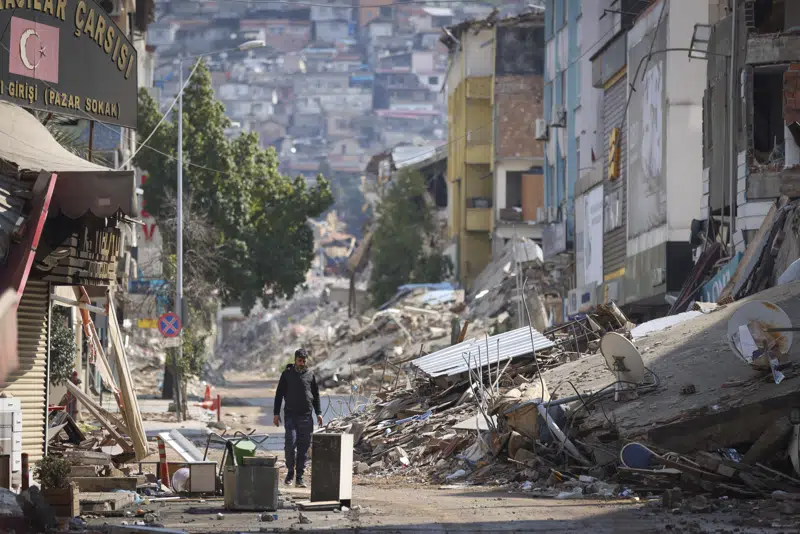Kahramanmaras earthquake devestates Turkey and Syria
A man walks past destroyed buildings in Antakaya
February 23, 2023
On February 6th 2023, an Earthquake struck eastern Turkey and northern Syria. The Earthquake reaching a 7.7 magnitude on the Richter Scale inflicted devastation unseen in the region in nearly a century. The Earthquake caused further resonances that made for over 3,100 aftershocks, which included a 7.6 magnitude aftershock that brought tragedy to Elbistan, according to the Turkish Disaster and Emergency Management Presidency (AFAD). The situation led to a state of emergency being declared in the ten affected states, those being: “Adiyaman, Gaziantep, Kilis, Hatay, Malatya, Diyarbakir, Adana, Osmaniye, Kahramanmaras (the namesake state of the Earthquake) and Sanliurfa.
Also of note, the Earthquake’s devastation was not simply localized to Turkey, as the earthquake also struck the war-torn nation of Syria. Syria, locked in a civil war since the revolution and crisis that began in 2011, was and still is woefully unprepared to deal with the fallout and consequences resulting from the earthquake. The devastation wrought upon the nation is believed to contribute to the already ongoing Syrian refugee crisis.
The total damage is currently estimated to be at approximately 84.1 billion dollars./ and the death toll is currently believed to be 48,990, with 122,500 total people injured. Turkey has borne the brunt of the devastation, experiencing 42,310 deaths, with 108,000 injured. The earthquake is the strongest in Turkey since the 1939 Erzincan Earthquake of the same magnitude, together with which it is the second-strongest in the history of the country after the 1668 North Anatolia Earthquake. It is the deadliest seismic event in the history of modern Turkey.
Various countries and organizations immediately moved to organize responses to the earthquake. More than eleven countries provided teams with search and rescue dogs to locate victims under the debris, along with monetary support. Outreach to Syria however, has been exceedingly limited due to Western sanctions and the still ongoing civil war.
The United Nations and NATO has been the primary organizer of support to Turkey, with member nations including even the Taliban controlled Afghanistan sending aid to Turkey and Syria. The European Union has also made an effective response to aid the victims of the disaster, due to Turkey’s inclusion in the European Civil Protection Mechanism. The EU dispatched thirty-one rescue teams and five medical teams from 23 member states to Turkey, and committed 3 million euros and 3.5 million euros to Turkey and Syria respectively.
The disaster has put on clear display the consequences governments may face if they do not prepare earthquake susceptible zones for what might be. In the cities of Los Angeles, Tokyo, and Santiago, earthquakes are common, yet the buildings can resist the devastation due to the buildings being built to withstand earthquakes. Turkey and war-torn Syria did not do so, and thus the earthquakes were highly devastating. Yet despite all this, it has also demonstrated a national unity across the globe, a unity to assist the victims of this disaster, and the governments of both Turkey and Syria.


